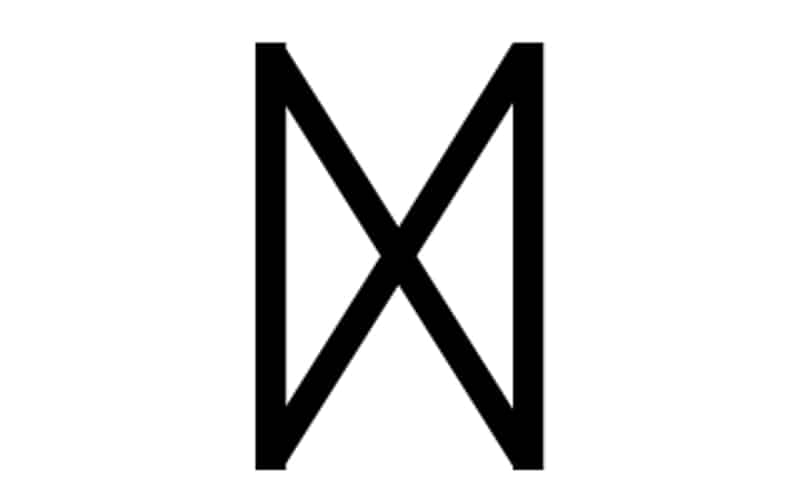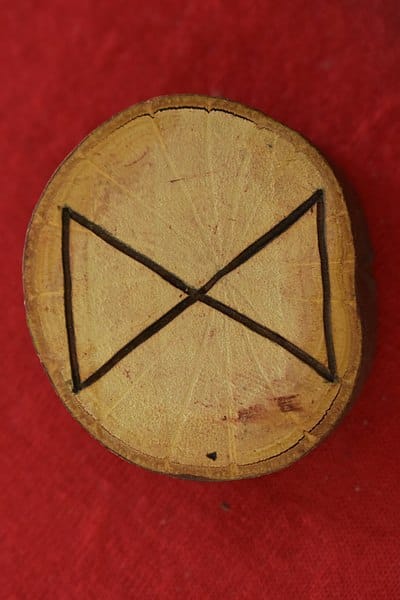As I delve into the mysteries of the Elder Futhark, a runic system that whispers the wisdom of our ancestors, I find myself drawn to the Dagaz rune. This ancient symbol, etched in stone and wood by the Vikings, holds a wealth of knowledge and symbolism that we’ll explore together.
Dagaz Background and Description
The Elder Futhark, a runic system that predates the Viking Age, is a fascinating subject. It’s like a time capsule, preserving the thoughts and beliefs of our ancestors. Among these runes, Dagaz holds a special place. It’s the second to last rune in the Elder Futhark, following Ingwaz and preceding Othala. The name ‘Dagaz’ in Old Norse translates to ‘day’, symbolizing dawn or a new beginning.
Archaeological evidence shows that people used the Elder Futhark across a vast geographic area, stretching from Scandinavia to continental Europe. People etched the Dagaz rune, along with its sibling runes, into stone, wood, and metal. They used these runes for communication and as tools for magic.
The etymology of ‘Dagaz’ is interesting. It stems from the Proto-Germanic word ‘dagaz’, which means ‘day’. This is a testament to the rune’s symbolic association with daylight, new beginnings, and enlightenment.
Graphical Representation

The Dagaz rune is visually simple, yet striking. It resembles an hourglass or a symmetrical butterfly, with two triangles touching at their points. This design is thought to symbolize the balance between opposites, like night and day or darkness and light.
Historically, the design of the Dagaz rune has remained fairly consistent. However, some variations exist, such as the rune being drawn with curved lines instead of straight ones. These variations, though minor, add to the rich tapestry of runic history.
Phonetic Value
In the Proto-Germanic language, the Dagaz rune represented the ‘d’ sound. As the Germanic languages evolved, this phonetic value remained largely consistent. Whether you’re speaking Old Norse, Old English, or Gothic, the Dagaz rune will still represent the ‘d’ sound.
Symbolic Meaning of the Dagaz Rune
The Dagaz rune is a symbol of dawn, but its meaning goes beyond the literal break of day. It represents enlightenment, awareness, and the awakening of one’s true self. In the context of the Proto-Germanic language, the term ‘dagaz’ or ‘day’ likely referred to the light of knowledge dispelling the darkness of ignorance.
There are no specific gods or goddesses directly associated with the Dagaz rune in the Norse pantheon. However, its themes of enlightenment and awakening could be loosely associated with the wisdom of the Allfather, the insightful Odin.
The Aett and its Symbolism
The Dagaz rune belongs to the third aett of the Elder Futhark, also known as Tyr’s aett. This aett is named after the god of justice and law, Tyr, and it carries themes of balance, order, and right action.
The third aett is the last of the three aettir in the Elder Futhark, and it represents the final stage of a journey or process. The Dagaz rune, as the second to last rune in this aett, symbolizes beginning of the end of this journey. It’s the moment of enlightenment that comes after a long period of struggle and growth.
Tyr, the god associated with this aett, is a figure of justice, law, and righteous warfare in Norse mythology. His themes of balance and order resonate with the Dagaz rune’s symbolism of enlightenment and awakening.
Elder Futhark Quiz
Do you want to test your knowledge of Elder Futhark runes? Then this quiz is perfect for you!
Don’t forget to play our other games as well!
Dagaz Used in Divination and Magic

While I don’t personally believe in divination or magic, I find the historical and cultural practices surrounding these topics fascinating. The Dagaz rune, like other runes, was likely used in runic divination and magic.
In divination, the Dagaz rune could signify a breakthrough or a moment of clarity. It might suggest that the seeker is on the verge of a significant realization or change.
Practitioners of magic could use the Dagaz rune in spells or charms for enlightenment, transformation, or protection. The light of day that Dagaz symbolizes frequently links to the concepts of safety and the expulsion of evil.
Dagaz in the Younger Futhark – The Lost Daylight
In the transformation period from the Elder Futhark to the Younger Futhark, around the 7th and 8th centuries, Dagaz, representing daylight or breakthrough, was lost. This disappearance marks a shift in the representation of enlightenment, awareness, and the cyclical nature of day and night.
Frequently Asked Questions
The Dagaz rune symbolizes dawn, enlightenment, and awakening. It represents the light of knowledge dispelling the darkness of ignorance.
The Dagaz rune represents the ‘d’ sound in the Proto-Germanic language and its descendants.
The Dagaz rune belongs to the third aett of the Elder Futhark, also known as Tyr’s aett.
In divination, the Dagaz rune could signify a breakthrough or a moment of clarity. People could have used the rune in magic to cast spells or charms related to enlightenment, transformation, or protection.
Featured Image Credit: BK, Public domain, via Wikimedia Commons

Hi Wolfgang, thank you for your interest in this rune! Among the elder futhark runes I believe dagaz comes the closest to forgiveness. While I haven’t seen that word used to describe it directly, it is closely associated with new beginnings and a “new day”. Surely, forgiveness also heralds a new beginning or a “new day” in a relationship.
A bit tongue-in-cheek, but maybe our Viking Age ancestors weren’t big on forgiveness and that explains why a rune clearly associated with it is “missing”. They lived in a culture where an eye for an eye was practiced rather harshly. Killing someone who had wronged you was possibly easier, and more expected, than forgiving someone.
I’m contemplating adding a section on our readers vikingr tattoos so when you are done, feel free to share an image!
Putting together a tattoo and need a set of runes with particular meanings. Dagaz has been the closest I could find that might represent forgiveness. Would you agree? Or is there a better one I missed. I’ve seen Gebo described as representing forgiveness on some websites but that doesn’t seem to match up with the historical resources. Also I’m already using Gebo for compassion. Lastly I’m using Tiwaz to represent justice.